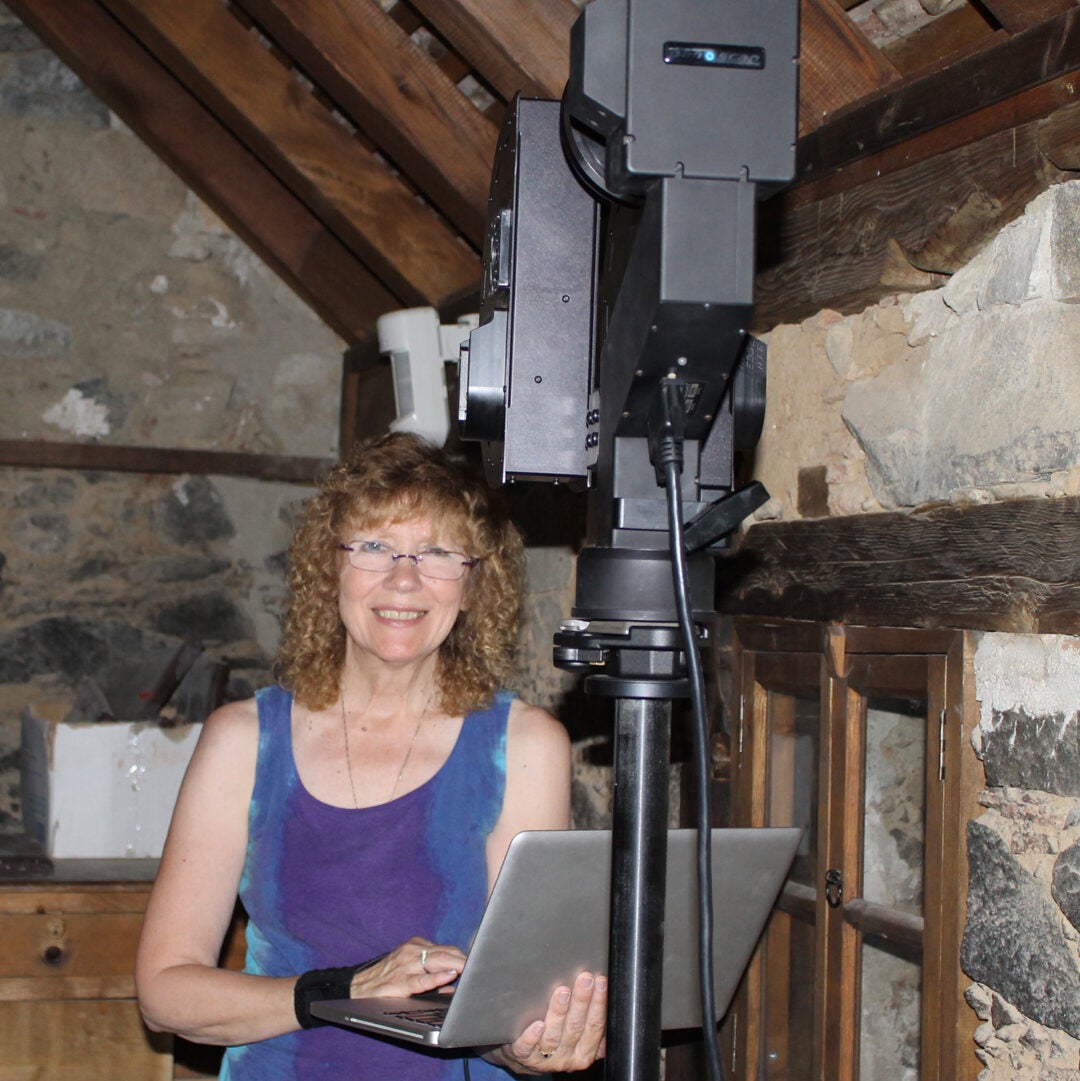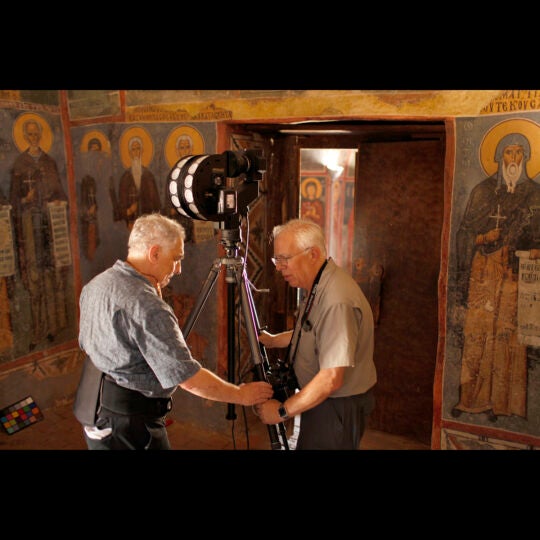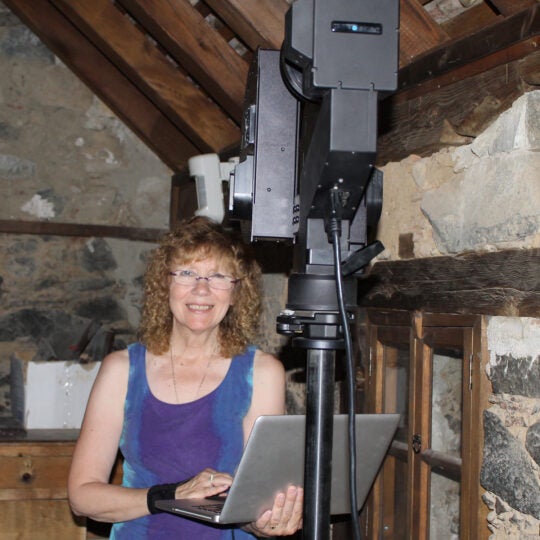Panoscan Imagery
High-resolution Panoscan imagery is best known for its use in forensic work associated with crime scene investigation (http://www.crime-photo.com/). The West Semitic Research Project has adapted the use of the Panoscan camera for capturing cultural heritage sites, most particularly medieval painted churches in the Troodos Mountains in Cyprus. In such documentation, a 360-degree Panoscan view is captured in high resolution as a quick but very effective means to document and objectively preserve an entire room. More importantly, the scene is captured as a whole in a single 360-degree pass in a matter of a few minutes. (In contrast, interpolated, stitched images—e.g., the images produced by the Gigapan system—take a long time to produce and are far more likely to introduce error—and, even more seriously, error of a type that appears imperceptible to the user.) A Panoscan image can be processed so that an observer can stand in the position of the camera and look anywhere in the documented space (including straight up and straight down). Detailed (close-up) images or video can then be linked to specific areas represented in the Panoscan imagery as “hotspots.” This preserves the entire visual environment with complete integrity, allowing investigators to study the scene in context, months and even years later.
Panoscan camera setup
Panoscan camera with built-in Better Light scanning back and light array. Kenneth Zuckerman is pictured adjusting the lens in preparation for capturing the image.
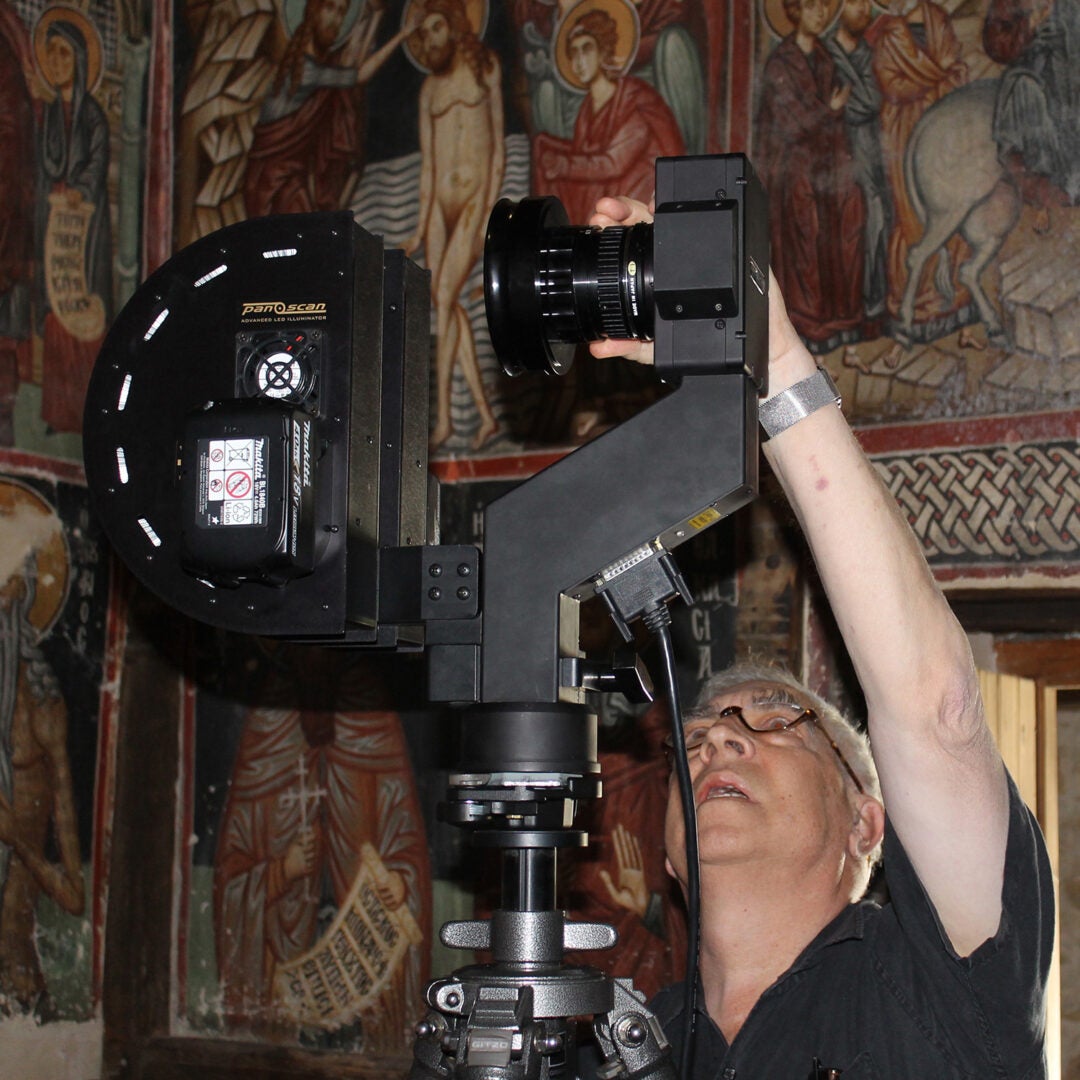
Light Array
The light array is attached to the front of the camera, with the lens in between. An array of LED lights illumines the top and bottom of the image as well as what is straight in front of the lens. A fisheye lens is used to gain a 360° view. Bruce and Kenneth Zuckerman are pictured here with the camera.
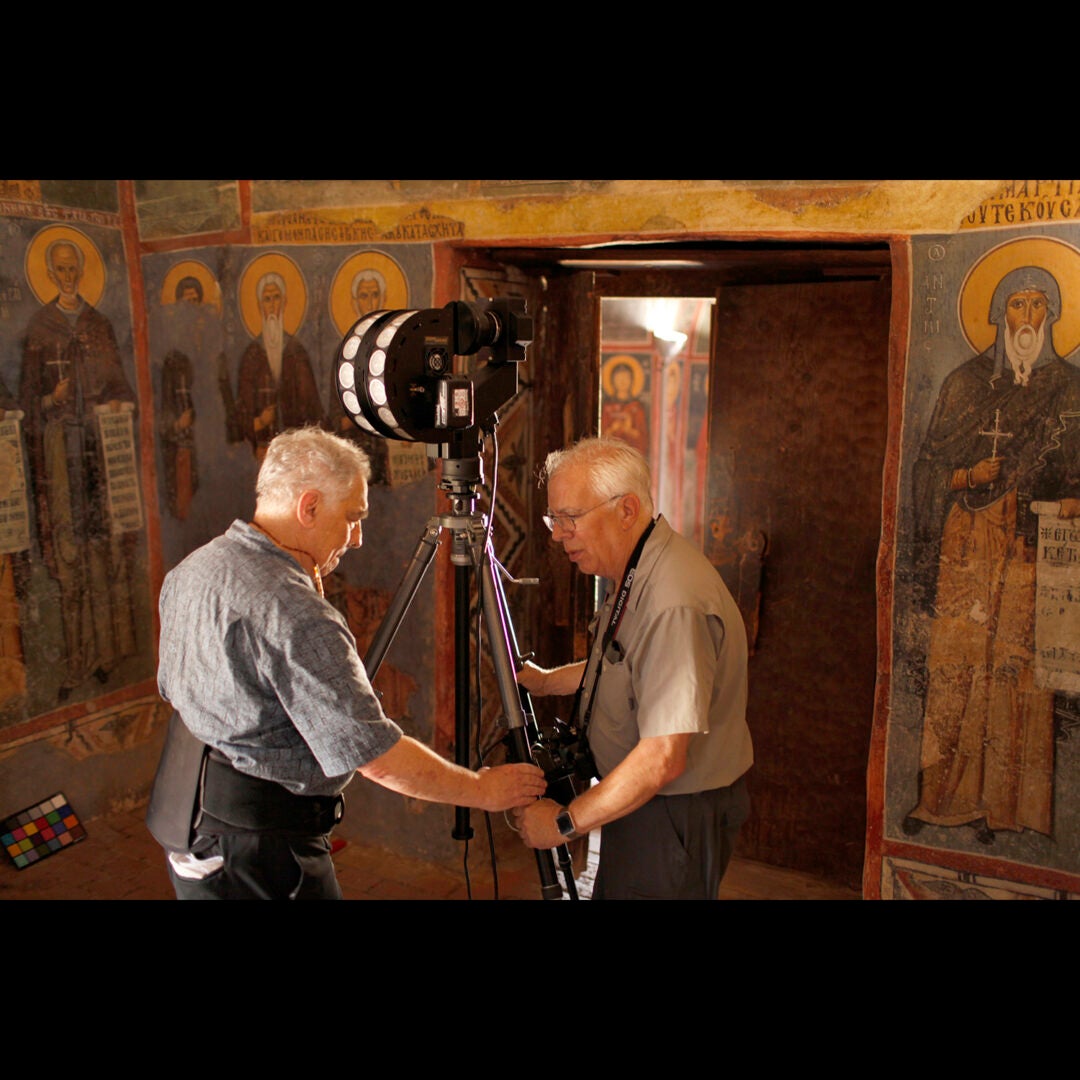
Laptop and Camera
The Panoscan camera is controlled from a laptop computer which allows one to preview the shot. It takes several minutes to take a Panoscan image. In our project it took anywhere from 11 to 15 minutes, because the rooms were quite large and lighting limited. Marilyn Lundberg Melzian is pictured here.
